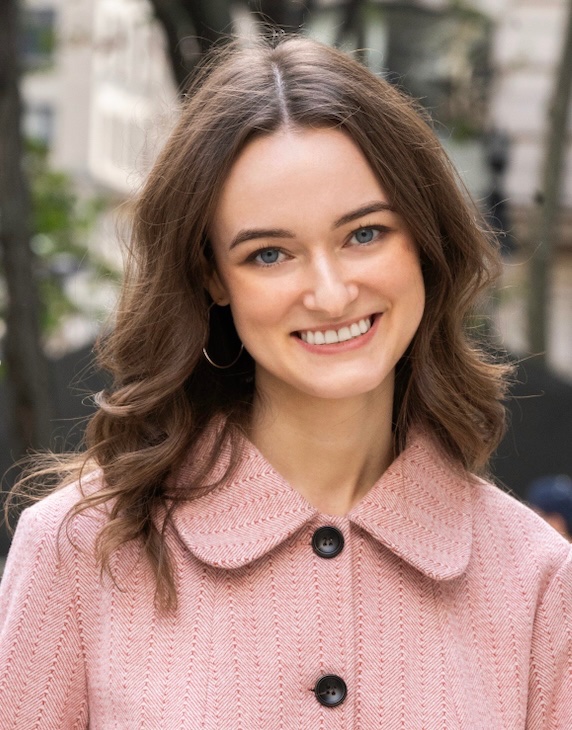By Katherine Prior, Monday, March 27, 2022
This essay is written as an assignment for the AHMP senior class “Exhibitions” project ΜΟΔΑ IS FASHION. The exhibition is on display at the State University of New York’s FIT campus Gladys Marcus Library in Spring and Summer 2022.

James Galanos (1924–2016) designed this chiffon dress for his spring/summer 1970 collection, tapping into his Greek heritage by using fabrics featuring motifs inspired by ancient Greek pottery. This particular garment is reminiscent of red-figure style Greek pottery, which is characterized by drawings of delicate linework on raw terracotta base set against a darkly glazed background.
Motifs on the dress include lions, a sculpture resembling David standing over the head of Goliath, and swirling shapes evocative of ionic columns. The chiffon used in this collection was designed by Tzaims Luksus (born in 1932), an American designer and textile artist who was also a guest lecturer and consultant at the Fashion Institute of Technology.
Born to Greek parents in Philadelphia in 1924, Galanos began drawing from a young age. He enrolled in the Traphagen School of Fashion in New York City at the age of 18 with dreams of becoming a costume designer for film. However, he only stayed at the school for a few months before leaving in search of more hands-on experience. After a few years of working in Paris and New York, Galanos headed west to California, where he created his first fashion collection in 1951. He took the finishing techniques and workmanship he had learned in Paris and applied it skillfully to his own garments, referring to his work as “custom ready-to-wear” rather than couture. His first collection was purchased by Saks Fifth Avenue in Beverly Hills and Galanos’s renown grew from there. In 1954, at the age of 29, Galanos became the youngest winner of the Coty Award (considered the “fashion Oscars” of the time) and proceeded to win the award again two years later. In 1984, he became the first recipient of the Coty Lifetime Achievement Award.
This dress from 1970 is notable for the way that it is both distinctly characteristic of Galanos yet also daring for its time in terms of fashion trends. Chiffon was one of Galanos’s design trademarks throughout his career, and this collection showed off the smocked chiffon that he was known for. What made Galanos’s 1970 collection surprising at the time, despite its solid connections to Galanos’s typical design style, was its length. The miniskirt had been the hallmark of the 1960s, and though some designers were cautiously experimenting with longer skirts, none of them went as far as Galanos did as he ushered in the maxi skirt trend of the 1970s. Although his designs for this collection drew from the past, Galanos was designing for the future.
Note: From November 1976 to February 1977, FIT celebrated “Galanos – 25 years.” Among those attending the opening gala on November 23, 1976 were the Greek Ambassador and his wife, philanthropists and members of the wealthy Greek elite in Manhattan including Dora Goulandris Voridis and members of the Coumantaros family.
Further Reading
Coffey-Webb, Louise and Sandra Rosenbaum. 2005. “James Galanos.” Dress, 32(1), 66–74.
Collins, Amy Fine. 2007. “When Galanos spelled glamour.” Vanity Fair, 49(1), April 14.
Morris, Bernadine. 1970. “Galanos abandons short hems—completely.” The New York Times, February 10.
Oakley, John. 2013. The Greek Vase: Art of the Storyteller. Los Angeles: J. Paul Getty Museum
About the Author

Katherine Prior is a senior in the AHMP program and is currently interning at The Museum at FIT. Her research interests are concentrated in film, television, and media studies.
Current Favorite Reading or Art Exhibition
An exhibition I’m currently looking forward to seeing is Guarding the Art at the Baltimore Museum of Art (March 27, 2022 to July 10, 2022). It features artworks curated by the BMA’s Security department.